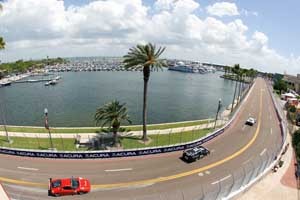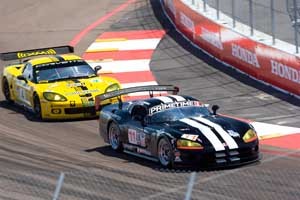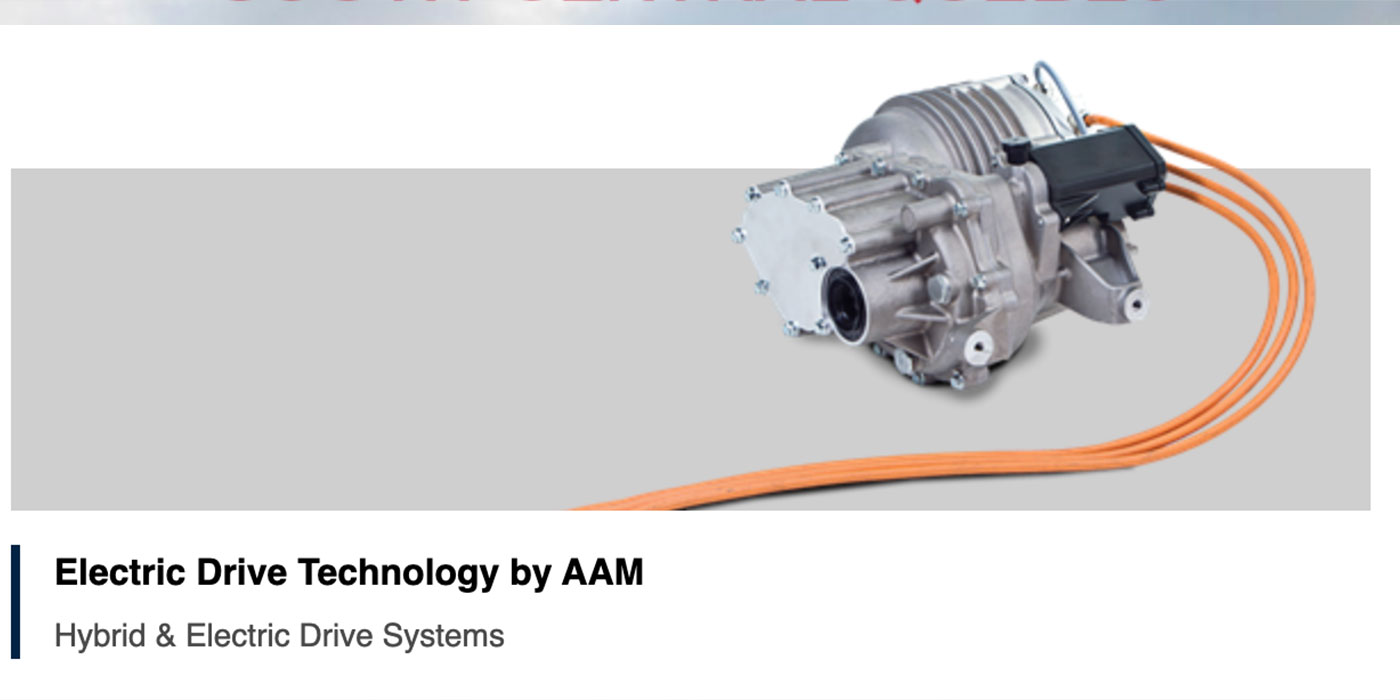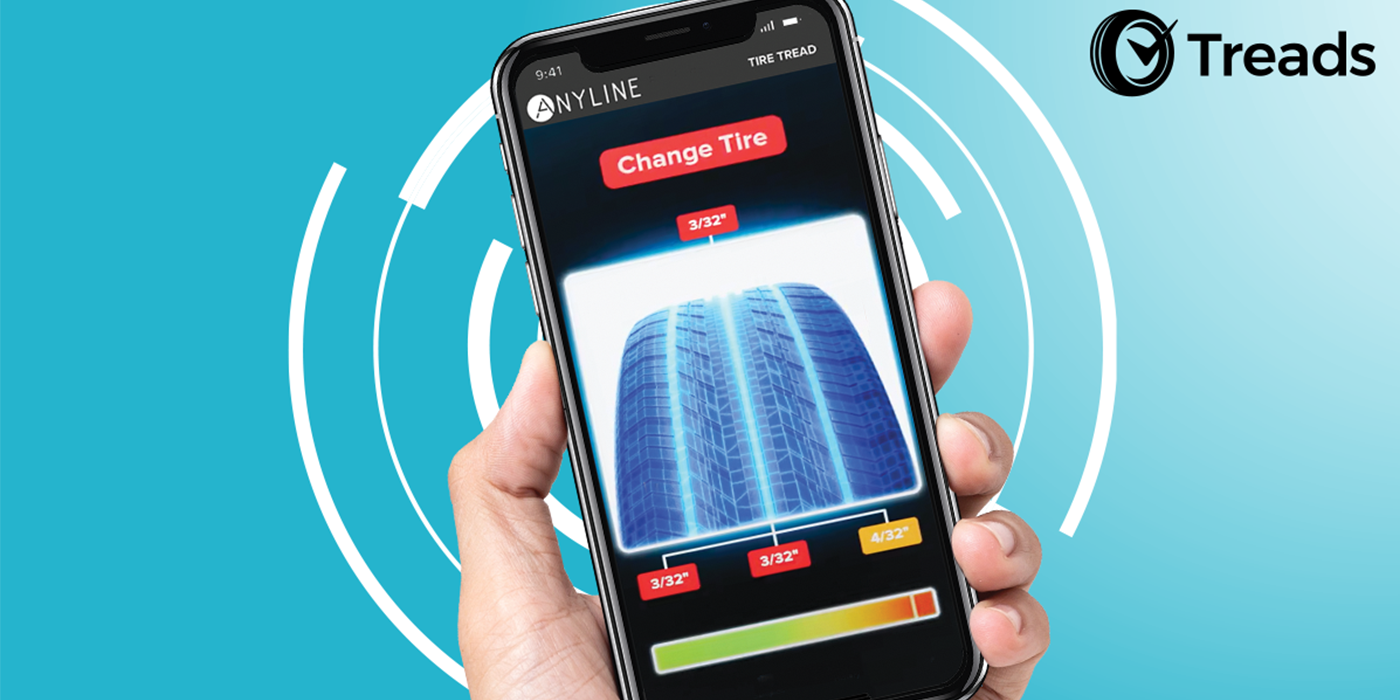Editor’s Note: Dave Caracci, retired VP from Robert Bosch, has returned to his first love – racing. In this multi-part series, Caracci takes us behind the scenes on the road with Prime Time Racing, where he serves as Logistics Engineer. This time he writes about the trials and tribulations the team encountered in St. Petersburg for the Acura Sports Car Challenge. Stay tuned for more notes in the coming weeks from Caracci’s race team travel journal.
By Dave Carraci
For those of you who read the report of our Sebring race in aftermarketNews.com and Counterman last month, welcome back. For those of you who didn’t, I’ll recap what the Primetime Racing Group is and what I have been doing with them.
Primetime is a non-factory backed (privateer) team campaigning a full race Dodge Viper in the American Lemans Series (ALMS) for 2008. The car was built and is maintained in Hollywood , Fla. , by Performance Technologies and is owned and driven by Joel Feinberg from Fort Lauderdale . U.K. native Chris Hall, who lives in Daytona Beach , is our co-driver. The race crew is made up of between 11 and 21 of us, depending on the length of the race. Some of our races are less than two hours long, while Sebring lasted 12 hours.
My job as a logistics engineer is to track data through out the entire practice and race week, and then use it to help make race strategy decisions. We track things like fuel consumption, tire wear, brake and suspension adjustments and every lap time of every session. We also keep track of other things such as how long it takes to change drivers, brake pad condition, suspension adjustments and competitor lap times.
FROM ONE RACE TO THE NEXT
When we left the Sebring race, the Primetime Viper had raced 1,080 miles in 12 hours, finishing in fifth place. Having beaten a bunch of factory Ferraris, Porsches and a Ford GT40, we were happy and excited, but the Viper was tired. In a little more than two weeks, we had to be in St. Petersburg for the Acura Sports Car Challenge, so the team semi took the car directly back from Sebring to the Performance Technologies shop to be prepped for St. Pete. Shop owner Brent O’Neill, car chief Frank Parzyck and the guys in the shop went through the car replacing all the brakes and wheel bearings, rebuilding the gear box and rear axle. During prep at the shop, Brent discovered that the transmission oil cooler thermostat had failed during the Sebring race. This small thermostat is a necessary part of the transmission cooling system. During a race, the six-speed transmission builds up so much heat, that an oil cooler and fan is installed to keep the transmission oil cool. But, if the trans fluid stays too cool, it causes frictional drag, slowing down the car.
Brent replaced the thermostat and thinking of the possibility of a transmission failure at a race, he ordered a spare six-speed transmission. This was no small decision since a racing sequential six-speed costs $21,000.
Of course after 12 hours of wheel-to-wheel racing at Sebring, there was a lot of body work to be done before the car could leave for St. Pete. But, with the race schedule for 1:30 Saturday, the Viper left the shop Tuesday night to arrive by Wednesday morning.
SETTING UP A RACING GARAGE IN THE CITY STREETS 
The race track for the Acura Sports Car Challenge is made up of city streets running around the airport and marina in downtown St Petersburg, Fla. To build the track, race officials close several main streets for most of the week. The airport runway becomes home to temporary race car garages.
Between the Indy cars and our sports cars, we end up with more than 100 teams each setting up a temporary garage on the airstrip in the center of town. It’s one big traffic jam. So, to make some room and to help keep us organized, all team semis and trailers are moved to the sports stadium a mile or two from town. The trucks all park in the stadium and as the race officials pick each team’s space for the week, that team’s truck is summoned over to the race track. If you ever thought every detail about racing must be sexy, it’s not. I would describe this part more like setting up a three-ring circus. Once our alignment rack is set up, the car is unloaded along with the tools, golf carts, scooters, wheels and “race stuff.”
Primetime owner-driver Joel has only raced at St. Pete once and co-driver Chris has never raced here at all. At 1.8 miles in length, with 14 turns every lap, this is a complicated race course. So Joel and Chris take the motorcycle and scooter out to drive laps around the course while we set up the garage. This is a good way to become familiar with the course, before they hit the track in a 170-mph race car. By 8 p.m. Wednesday night, we’re set for the next day, so we head for the motel. On Thursday, we have a trackside breakfast at 7 a.m. If setting up temporary garages resembles a circus, so too does feeding the race teams. Ten to 20 people per team, who will spend at least 12 hours at the track each day for nearly a week, can’t subsist on hot dogs alone.
A businesswoman named Marion has developed a great service to keep the AMLS teams fed. A large event tent is set up that gives shelter to an entire cooking staff to feed hundreds buffet-style at each race. She is open every day as long as we are at the track. Each team pays her by the person, by the day and we eat whenever we want to. This keeps the teams from worrying about food logistics, with the only negative being that we each gain weight by the end of each race week.
After breakfast, we open the garage and ready the car for the day. The guys push the car over to the technical inspection center where the IMSA safety inspectors go over every car to make sure it is safe and meets the rules. We pass tech without any problems and spend much of the day readying the car for testing.
SETTING UP A RACE CAR FOR CITY STREETS
A race track on city streets is much different than a track like Sebring, Indy or Daytona Speedway. The streets have bumps, dips, pavement changes, and all kinds of other issues can force the car all over the place. Every time the car bounces, the tires lose adhesion, making it dart right or left. In a turn or under braking, this bump issue makes it impossible to drive at racing speeds. To handle the bumps, Frank installed softer springs giving the car a better feel as it rides over the bumpy streets of St. Pete. The only concern is how much the softer springs will allow the car to lean over during hard cornering.
Another issue with a street course is that it is tight. With 14 turns in 1.8 miles, the drivers use the brakes over and over in quick, hard succession. While the driver never brakes as hard at the end of the long straightways as they did at Sebring, he has to brake much more often. On a per-lap average, Chris will brake the Viper 11 times each lap. Thinking of it another way, he will be on the brakes an average of once every eight seconds! To handle this, the brake technicians worked with Brent and Frank to choose a softer “grabbier” brake pad for St. Pete. These softer pads won’t last as long as the harder Sebring pads, but the St. Pete race is less than two hours long. Frank has also changed rear and front master brake cylinders to allow more pressure on the rear brakes. This is done by varying the brake cylinder diameter. A smaller diameter cylinder applies more brake pressure for the same amount of foot pressure, but requires more brake pedal travel. A larger diameter master cylinder takes less travel but requires a lot more pressure from the driver’s foot to stop the car.
IT’S OFFICIAL TRACK TIME FOR THE ALMS
Friday morning, we are ready for our first official practice session at St. Pete. The Viper is polished, the tools, tires and equipment have been taken across to the racing pits and the drivers are in their flame-resistant suits. Since the racing pits are across the track from our garage, all the teams need to move cars and gear at the same time across the track, before the cars begin to practice. Once the cars are on the track, the only way back to the garage and semi is over a spectator walking bridge. It’s about a one-mile walk.
Thirty minutes before the cars are to go on the track, Frank plugs the computer terminal into the Viper and, for some weird reason, the on-board fire system goes off. An on-board fire system has a fire bottle with nozzles all around the car. The driver just pushes a big red button and the fire extinguisher squirts foam throughout the car. But right now, there is no fire, but the Viper has just “extinguished” itself 30 minutes before it needs to be on the track for practice! The entire team goes into action pulling the back window and windshield out of the car to gain cleanup access. The shop vacuum is used to suck up the foam inside, while the air hose is used to blow foam off the engine, fuel tank, and electrical connections. With a new fire bottle attached, Joel hops in a wet seat and starts to warm up the engine. At 8:05 a.m. , he pulls on the track for practice and we all breathe a lot easier.
The crew mans their race pit stations, while I start tracking data. Joel’s first lap is a 1:29.7 as he charges off around the track for more practice. Then the times are 1:26 , 1:23 , 1:22 , as the lap times drop but soon he levels off, not getting any faster. “The front of the car is pushing out as I enter the turns” Joel reports over the car radio. “Adjust the brake bias” suggests Frank, back through the radio system. The viper has a red knob on the dash that allows the driver to adjust the pressure being applied on the front and rear brakes. The dash shows that the pressure is 55 percent front 45 percent rear, so Joel turns the knob to 50-50. The lap times drop to 1:21 , 1:20.8, 1:19 and then level off again. He’s been in the car 29 minutes, so Brent has him pit to put Chris in for some practice. In order to run the Saturday race, a driver must have practiced at least five laps, so it is important to make sure each of these guys gets time in the car for the first session, in case we have a problem getting out for practice again before the race. Chris turns a first lap of 1:27 and gets down to a 1:186 in 12 laps when he reports in that the rear brakes are now locking up as he brakes for the turns. He pits so that Frank can adjust the shock rebound. The Viper has gas shocks that are fully adjustable both on the down or compression stroke of a bump as well as the rebound after the bump. By turning the shock adjustment knobs to allow the shocks to rebound quicker, Frank hopes to keep the tires more firmly on the track as the car brakes over bumps and dips on the St. Pete streets. Chris takes the Viper back out but is still having brake lock-up when the Audi TDI bumps him entering a turn. Brent decides to have him come in for a look over and at 9:02 a.m. , our first practice session ends.
Back in the garage, the guys and I measure the fuel used and I determine that we are burning .51 gallons a lap for an average of 3.5 mph. This will be important when we start the race on Saturday. The spare transmission Brent ordered arrives via airfreight, but we hope we never need it. Frank, Brent and the drivers talk over the brake-locking issue and Frank decides to reverse the master cylinder diameters, little in the front (more pressure) big in the rear (less pressure) and the rest of the guys go over the car looking for problems.
PRACTICE AND MORE PRACTICE
At 1 p.m. , Joel takes the car back out for another practices session. As the cars are getting faster with practice, he really needs to concentrate on traffic. While the Viper and other GT cars are fast, a Porsche or Audi racing in the bigger Prototype class is 20 to 30 mph faster on the straight. In a GT car it is easy to not realize you are being passed by a P car and if you cut one off you could cause a horrible crash. In fact, the classes each run different color headlamps to help the drivers know what kind of car is catching and passing them. A GT, like our Viper has yellow head lamps while a P car like the Penske RS Porsche has white lamps.
Keeping an eye out for overtaking traffic, Joel works his lap times down to 1:16.6 and after 17 laps of practice, Brent brings him into the pit and puts Chris in the car at 1:31 p.m. Chris runs 10 laps running around 1:17.2 when he calls in to report he is calling it a day until Frank and Brent can figure out what is making the brakes continue to lock up.
Back in the garage, Frank and the guys install all new brake rotors and change back to the harder brake pads that we ran successfully at Sebring. He also has the team install softer springs. I measure the fuel, double check the mileage calculations and put in 10 gallons for the upcoming qualifying session.
A look at our pit stop data shows that while the guys can refuel the car in less than 45 seconds and the tire change takes less than 40 seconds, it is taking close to two minutes to change drivers during the pit stops. Following a lot of kidding by the crew, Joel and Chris begin to practice and develop techniques that eventually enable them to make a driver change in less than 50 seconds. Practice, it seems, is not just for driving.
 QUALIFYING, THE FIRST LET DOWN
QUALIFYING, THE FIRST LET DOWN
With Joel having turned the fastest practice lap so far, Brent decides that Joel should drive the car in qualifying and he gets the Viper down to our best time yet of 1:15.8. That sounds terrific until we realize everyone else in our class went faster too, and we have qualified on the back row. It’s a far cry from the fifth-place finish at Sebring just three weeks earlier!
With the car back in the garage, the crew starts going over everything and Brent, Frank and Eric, our engineer start brainstorming over car handling and poor lap times. While they make a tweak here and a tweak there, my wife Mary calls on the cell. “I’m here to see the race tomorrow, but I don’t have a car pit pass,” she explains. She has parked in the city parking garage on 2nd street and 4th avenue and expects to be picked up! I jump on the pit crew Vespa and zip out of the pits into the St. Pete city traffic to pick her up.
As Mary and I re-enter the racing garage area, the track has closed for the day, so I suggest we take the Vespa for a spin around the track, so she can see what the drivers see, Vespa-style. As we circulate the course, we get to a very high speed left-hand turn skirting the marina boat basin. There is a concrete wall on both the inside of the turn and the outside of the turn. Having driven many race cars in my youth, I point to the outside wall and suggest to Mary that during tomorrow’s race, someone will drift into that wall at over 100 mph and hurt their car big time. We head back to the garage, then dinner and the crew rests up for our Saturday race in St. Pete.
RACE DAY RACE STRATEGY
With the race scheduled to start at 1:30 p.m. , the entire crew is up, out of the motel and having breakfast in Marion ’s tent by 7 a.m. On a race day, you need to get to the track ahead of the spectators or you can have a really tough time getting to your garage.
The American Lemans Series has an excellent policy of allowing the fans to come into the garage area on race day to meet the crews, drivers and see the cars. It’s a great promo tool and actually helps us appreciate how much the fans love seeing our cars race. Joel and Chris set up a table in front of our semi and autograph driver pictures for the spectators. Frank and the crew go over every detail of the car, while some of the team goes to the racing pit to make sure everything is set up there for the actual race.
Brent and I review several classic pit strategies:
A) With lap times of 1:15 , if we pit during a green flag lap and it takes 1:25 for fuel, tires and a driver change, the field will lap us during our pit stop. But, yellow laps behind a pace car take about three minutes. If we can pit during yellow flags displayed as they clean up after a crash, we can pit and get out, before the field laps us. Some questions to be answered:
· How much will the car burn on each green flag lap?
· On each yellow flag lap?
· When is the earliest we should pit for fuel if there is a yellow flag?
· What is the farthest we should try to go before fuel is there is no yellow flag?
B) To qualify for championship points accumulated during the season, a driver must drive at least 30 percent of the race. Or to look at that another way, neither of our drivers More questions:
- How does that fit into the refueling situation?
- How do we make sure we don’t need to change drivers during a green flag lap?
- Which driver is fastest in mid-day heat, early race traffic or rain?
C) For the car to qualify for season money and points, it must complete 70 percent of the total race length or it is as if it never entered that race.
Following our strategy session, I write all the pertinent times and notes into my data lap sheet as reminders. This way when we’re in the heat of the race, I am reminded what needs to be done before or after a certain lap. These are commonly referred to as “pit windows.”
IT’S RACE TIME
I’ve been lucky enough to be involved in some big things in my life, and I’ve been in hundreds and hundreds of races, but I’ve got to tell you that there is still nothing in my life that gives me a bigger thrill than putting on a fire suit and walking along with the rest of the race teams past all the cars, spectators, bands, TV’s and other gala to line the car up for the start. At 12:30 p.m. , we all cross the track along with the Primetime Viper for the last time before they close the track. From now on, the only way back to our garage is over the spectator bridge. Brent’s been here many times before and he’s one smart dude, so he has one of the guys drive the Vespa to the pedestrian bridge and park it there. “If we need anything from the semi during the race, one of us can just hoof it across the bridge jump on the Vespa and get to the semi fast,” he explains.
The cars are all line up on the front straight and my data center has the computer screens fired up and ready to go. The bands play as the spectators cheer. In a city street race, there are spectators on the balconies and roofs of every condo and office building. There are enthusiastic spectators everywhere and at 1:18 p.m. the race engines fire up and the cars roll down the front straight for the first of two pace laps.
Chris is taking the first stint as driver. He does a radio check. I can hear him, Frank and Brent on our car channel and I hear the race officials on their channel, as my radio scans for any important announcements. Frank and the guys have made a lot of changes to the brakes and springs on the car trying to fix the braking and handling issues and we just have to keep our fingers crossed. The rest is up to Chris, then Joel. As the cars come by on the first pace lap, it is quite disheartening seeing the Viper in the last row, where we qualified. But, it’s a nearly two-hour race, so here we go. The green flag drops and nearly 40 cars roar into turn one. They all make it through and Chris disappears with the pack.
Lap 1 takes more than two minutes as the traffic is horrendous. But over the radio I hear Chris. “The car’s handling beautifully and braking perfectly,” he says.
Lap 2: The Viper comes by still surrounded by traffic and turns a 1:51 . “The car has never felt faster,” Chris’s voice reports on the radio. “I’m going after the GT 40 this lap.”
Lap 3: The Viper comes by in 1:19 , followed by the GT 40!
Lap 4: Chris starts to chase down the Panoz. He runs a 1:185 and we know he’ll pass that Panoz in Lap 5.
Lap 5: Suddenly a voice with a British accent that sounds like Chris says, “Sorry guys.”
What?
When you start to go really fast, it’s like driving on ice. It’s the edge of a razor blade if you want to be really fast. At those speeds, as the saying goes “stuff happens.” Remember that wall I showed Mary on the Vespa ride? Guess who drifted into it.
Thirty or 40 seconds after we hear the voice on the radio, Chris and the Viper limp into our pit with a bent right front suspension. Frank and Brent immediately decide to repair it. Remember, we only need to finish 70 percent of the race to get points. The front brake rotor and hub are broken, so as Brent and Frank start dissembling it race mechanic Mike Ansbaugh heads for the semi to get a new hub, brake rotor and tie rod end. Hoofing down the pit straight through the spectators, over the bridge, he jumps on the Vespa Brent had strategically parked there, only to find that someone has been trying to “borrow” it. The ignition key hole is messed up. He jumps off the Vespa and runs on foot to the semi and back carrying the parts in a box.
I’m still tracking laps and race distance and by the time Brent and Frank have the car fixed, 32 laps have been run by our competitors. Joel’s in the car and as soon as the air jack drops, the wheels hit the pavement, and he smokes it out of the pit! After he catches his breath, I report to Brent that we should finish the race within 69 percent and 71 percent of the total length depending on the lead cars and how fast Joel can push the Viper. With a suspension put back together on the pit lane, without alignment equipment, Joel will need to sort out the car’s handling. He’s pushing the car hard, turning laps of 1:45 , 1:31 , 1:25 , 1:21 , 1:20 , 1:18 and he is starting to move.
On lap 21, Joel passes the GT 2 Aston Martin and enters a fast right-hand turn just before being lapped by one of the super-fast Prototype cars with the white head lamps. Pat Long, driving the Penske RS Spider, is fighting for first overall and doesn’t want to wait to pass Joel, so he ducks under the Viper’s inside rear fender and as Joel turns into the corner, Long spins our Viper into the outside wall. At more than 100 mph, Joel and the Viper bounce off the wall, wiping out the left front and rear suspensions before spinning 180 degrees to face the exit of that corner. Out of the turn shoots the GT2 Aston Martin. The driver tries to fit between Joel and the cement wall, but he can’t fit and hits Joel, tearing the entire right side off the Viper, body, suspension, and all. The Aston Martin is wrecked, the Viper is totaled and Pat Long doesn’t win the race anyway.
Joel is O.K. but at 2:35 p.m. Primetime’s St. Pete race is over.
After the wrecker brings the car back to our garage, we assess the damage: All four brake assemblies, wheels and hubs are gone. The body is pretty much destroyed, but worst of all, the chassis is bent at least six inches. There’s no time to fret now. We load the car in the semi so it can head back to the Performance Technologies shop. The guys only have two weeks to build a spare car and get it to Long Beach where we’ve got an ALMS race to run.
Click here to read Caracci’s tales from Sebring.
Photo credits: Richard Prince













